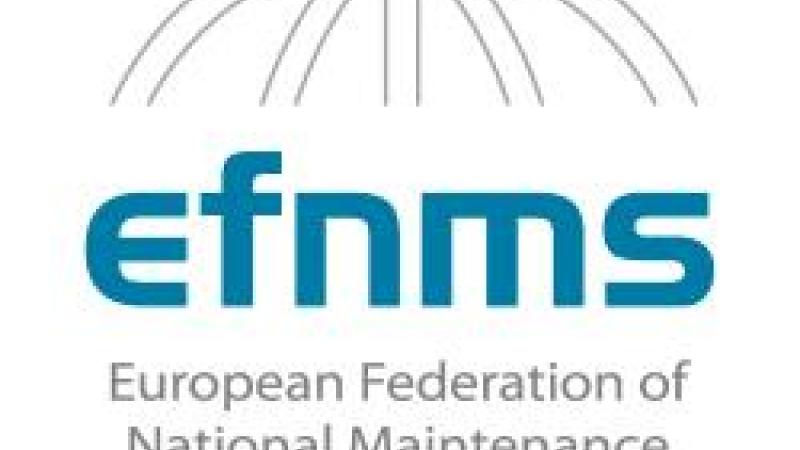What is maintenance?
Very broadly speaking, maintenance is the total of activities with the objective of maintaining or restoring "an acceptable condition" of machines, installations, buildings, (traffic) infrastructure, computer programmes, nature, etc., in order to guarantee (immediately and in the long run) the "required degree of functionality".
At BEMAS, the Belgian Maintenance Association, we focus specifically on technical maintenance and asset management of machines, installations, buildings and infrastructure. We firmly believe that professional maintenance and asset management is the key to success for every company and society. A maintenance professional will keep machines and other assets working safely and reliably, and will continually strive to increase the efficiency of the equipment.

The history of maintenance
The very first book ever written on maintenance and asset management was "De Aquaeductu Urbis Romae" ("On the Aqueducts of the City of Rome"), written in the year 97 by Sextius Julius Frontinus, manager of the water company of Rome. This high official was appointed by Emperor Nerva to restore Rome's water network, which had fallen into disrepair due to mismanagement during the time of Emperor Domitian.
The following figures show that the water network, even by today's standards, was an impressive feat of engineering: 500,000 cubic metres of water a day flowed into Rome through nine aqueducts, four of which were 80 kilometres long. To restore it, Frontinus developed and used all the basic principles of modern maintenance, and he describes them in his book: site visits, technical documentation, standardisation, daily meetings, work preparation, outsourcing of maintenance, quality control, preventive maintenance, overhauls, right down to accounting. Frontinus was proud that his interventions had successfully solved the water shortage. To such an extent, in fact, that an additional aqueduct was no longer required to supply Rome with sufficient water. The surplus water could even be used to flush out Rome's sewage system, thus eliminating the stench from the low-lying Trastevere district.
It is noteworthy that Frontinus clarifies the basic principles of his approach at the beginning of his book: "Faced with this great responsibility, I consider it my duty first of all to have a complete knowledge of what I must tackle ("Primum ac potissimum existimo... nosse quod suscepi"). He considered this knowledge to be the best tool to ensure that he would make the right decisions at the right time, and he knew that it would also enable him to manage his subordinates in the best possible way.
Frontinus went to inspect the entire network in person, in order to assess the situation with his own eyes: the poor state of the pipes, floods, wastage of water, but above all, countless holes ("puncti") from which people were illegally tapping water, as well as unpaid labourers who were being used at night. His first decision was to convince the Emperor to reintroduce network fees. Secondly, detailed plans and drawings of the network were made (cf. XVII.4: "So that I can see the situation from my office as if I were on the spot"). Thirdly, he instituted a daily maintenance meeting.
He also made unannounced inspection visits to get to know the behaviour of his staff better, and arranged for the Roman Senate to issue edicts imposing severe fines for stealing water. He also ensured that all trees near the pillars of aqueducts were cleared so that their roots would not affect stability (proactive maintenance). So "Nihil novi sub soli", "nothing new under the sun".
What are the types of maintenance today?
We distinguish four main types of maintenance:
- Reactive or breakdown maintenance is the repair of breakdowns. Technical problems are solved so that the machine functions correctly again.
- Periodic maintenance is the performance of certain maintenance tasks, such as replacing a filter, with a fixed frequency or after a certain number of hours of operation.
- Predictive maintenance is the performance of maintenance interventions after a check to see if it is necessary to perform certain maintenance or not. Periodic and predictive maintenance together form preventive maintenance.
- Proactive maintenance is the entirety of improvement actions to permanently prevent certain failures. For example, by adjusting the design, choosing other materials and components, etc.
- Strategic maintenance 5.0, strategic Maintenance driven by humancentric digitalization and focusing on a resilient and sustainable asset performance
What is the task of the maintenance department?
What is the importance of maintenance in a society?
In Europe, every year billions of euros are invested in new machines, factories, streets, etc. It is the task of the maintenance staff to take good care of these large investments. They have to guarantee that the machines do the job they were designed for, with the highest possible return for the investors. Maintenance personnel's job is not just to repair and maintain the machines. A maintenance professional will keep your machines running safely and reliably. He or she will also constantly try to increase the efficiency of your equipment.
The main task of a maintenance professional is to ensure that the investment made will yield the highest return during the entire life cycle of the machine. Improving availability, reliability, safety and cost-effectiveness throughout the life cycle is the basis of profitability and competitiveness. The more competitive the industry is and the better the community is able to provide services, the better the return on assets is optimised.
BEMAS - Belgian Maintenance Association
Every European country has a national maintenance association - Bemas in Belgium - founded for professionals and companies in the maintenance business. At Bemas, professors, scientists, consultants, maintenance managers and professional technicians, as well as students, will meet and discuss common problems and experiences in maintenance to improve the know-how and image of the maintenance business in the country. Networking, education, benchmarking, training and information exchange are the main tasks of these associations.
If you like to keep up to date with the latest developments in the maintenance business and processes, you will find information on this at Bemas.
We welcome you to join the maintenance professionals! More information on the membership.

European Federation of National Maintenance Societies
The European Federation of National Maintenance Societies (EFNMS vzw) is an official non-profit trade association under Belgian law and the platform for the National Maintenance Societies in Europe.
Its mission is to coordinate and represent National Associations by supporting a network of knowledge and providing resources to improve the know-how and direction of Maintenance in the European Union. The objective is to improve the performance and competitiveness of Europe's industry and infrastructure through Maintenance, ensuring environmental, social and economic preservation.
Voor meer informatie, zie www.efnms.eu of contacteer Bemas op info@bemas.org






